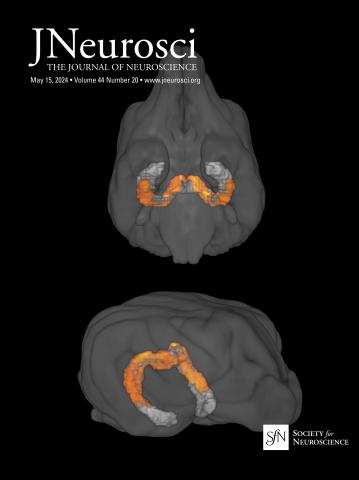Developmental Changes in Brain Cellular Membrane and Energy Metabolism: A Multi-Occasion 31P Magnetic Resonance Spectroscopy Study.
IF 4.4
2区 医学
Q1 NEUROSCIENCES
引用次数: 0
Abstract
Structural neuroimaging studies of typical development reveal increases in grey matter volume during childhood, followed by shrinkage in adolescence and early adulthood. With neuropil constituting the bulk of grey matter, these developmental changes may reflect neuropil reorganization accompanied by alterations in cellular membranes, as well as changes in related energy demand. Phosphorus magnetic resonance spectroscopy (31P MRS) allows in vivo assessment of changes in the brain's high-energy phosphates - phosphocreatine (PCr), inorganic phosphate (Pi), and adenosine triphosphate (ATP) - as well as metabolites associated with synthesis and degradation of membrane phospholipids (MPLs) - phosphocholine (PC) and phosphoethanolamine (PE), and their breakdown products, glycerophosphocholine (GPC) and glycerophosphoethanolamine (GPE). Forty-nine children and adolescents aged 6 to 14 years at baseline (37 boys, 12 girls) were assessed on up to three occasions approximately 12 months apart. MPL precursor levels decreased across all examined regions over time, including cortical and subcortical gray matter and two major white matter tracts. Breakdown products increased in the prefrontal cortex (PFC) in younger children but decreased in their older counterparts. While ATP and Pi decreased across most regions, PCr changes were heterochronic and regional: Hippocampal increases were more pronounced in older children, whereas most of the remaining regions showed no change. Changes in MPL precursors were positively associated with change in PFC cortical thickness, suggesting that the expansion and contraction of neuropil are coupled with structural brain changes during childhood and adolescence. Thus, in vivo 31P MRS provides new insights into the neurobiological mechanisms of normal brain development.Significance Statement In childhood and adolescence, structural neuroimaging reveals marked changes in the brain's grey matter, most likely indicating contraction and expansion of its main component - the neuropil. The neurobiological mechanisms of these changes are, however, poorly understood. In the first of its kind longitudinal study of 6- to 14-year-old children, we examined in vivo changes in metabolites associated with brain energetics and the synthesis and degradation of membrane phospholipids using phosphorus magnetic resonance spectroscopy. We identify developmental changes in the metabolites associated with contraction and expansion of the neuropil and their coupling with structural changes in late-to-mature brain regions of the prefrontal cortex, indicating candidate mechanisms of brain development.脑细胞膜发育变化和能量代谢:多场合31P磁共振波谱研究。
典型发育的结构神经成像研究显示,儿童期灰质体积增加,随后在青春期和成年早期萎缩。由于神经pil构成了灰质的大部分,这些发育变化可能反映了神经pil重组伴随着细胞膜的改变,以及相关能量需求的变化。磷磁共振波谱(31P MRS)可以在体内评估大脑高能磷酸盐的变化——磷酸肌酸(PCr)、无机磷酸盐(Pi)和三磷酸腺苷(ATP)——以及与膜磷脂(MPLs)的合成和降解相关的代谢物——磷酸胆碱(PC)和磷酸乙醇胺(PE),以及它们的分解产物甘油磷酸胆碱(GPC)和甘油磷酸乙醇胺(GPE)。49名6至14岁的儿童和青少年(37名男孩,12名女孩)在基线时进行了最多三次评估,间隔约12个月。随着时间的推移,MPL前体水平在所有被检查的区域都有所下降,包括皮层和皮层下灰质以及两个主要的白质束。在年龄较小的儿童中,前额叶皮层(PFC)的分解产物增加,而在年龄较大的儿童中则减少。虽然ATP和Pi在大多数区域下降,但PCr的变化是异慢性和区域性的:海马的增加在年龄较大的儿童中更为明显,而大多数其余区域没有变化。MPL前体的变化与PFC皮质厚度的变化呈正相关,这表明在儿童和青少年时期,神经pil的扩张和收缩与大脑结构变化相关联。因此,体内31P MRS为正常大脑发育的神经生物学机制提供了新的见解。在儿童和青少年时期,结构神经成像显示大脑灰质的显著变化,最有可能表明其主要成分-神经膜的收缩和扩张。然而,这些变化的神经生物学机制尚不清楚。在首次对6至14岁儿童进行的纵向研究中,我们使用磷磁共振波谱检查了与脑能量学和膜磷脂合成和降解相关的代谢物的体内变化。我们发现了与神经皮层收缩和扩张相关的代谢物的发育变化,以及它们与前额叶皮层晚期至成熟大脑区域结构变化的耦合,表明了大脑发育的候选机制。
本文章由计算机程序翻译,如有差异,请以英文原文为准。
求助全文
约1分钟内获得全文
求助全文
来源期刊

Journal of Neuroscience
医学-神经科学
CiteScore
9.30
自引率
3.80%
发文量
1164
审稿时长
12 months
期刊介绍:
JNeurosci (ISSN 0270-6474) is an official journal of the Society for Neuroscience. It is published weekly by the Society, fifty weeks a year, one volume a year. JNeurosci publishes papers on a broad range of topics of general interest to those working on the nervous system. Authors now have an Open Choice option for their published articles
 求助内容:
求助内容: 应助结果提醒方式:
应助结果提醒方式:


